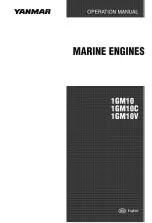
Note
◆
During the following checking procedure, only the camshaft
and crankshaft must be secured in position. It is very difficult
to find the securing position of the high-pressure pump hub
again. However, a slight deviation -arrow- does not influence
the engine operation.
– Check whether:
◆
Camshaft hub can be locked with locking pin -3359-.
◆
Tensioning roller indicator is centred or maximum 5 mm to
right of base plate notch.
If camshaft hub cannot be locked:
– Pull crankshaft stop -T10050- back until pin uncovers hole.
– Turn crankshaft in opposite direction of engine rotation
slightly past TDC.
– Now turn crankshaft slowly in direction of engine rotation un-
til camshaft hub can be secured in position.
– After locking, loosen securing nuts of camshaft pulley.
If pin of crankshaft stop -T10050- is positioned on left next
to hole:
– Turn crankshaft in engine direction of rotation until crank-
shaft stop pin engages in sealing flange whilst turning.
– Tighten securing bolts of camshaft toothed belt pulley by
hand first and then tighten to 20 Nm.
If pin of crankshaft stop -T10050- is positioned on right
next to hole:
– Slightly turn crankshaft in opposite direction of engine rota-
tion.
– Now turn crankshaft in engine direction of rotation until
crankshaft stop pin engages in sealing flange whilst turning.
– Tighten securing bolts of camshaft toothed belt pulley by
hand first and then tighten to 20 Nm.
Continuation
– Remove locking pin -3359- and crankshaft stop -T10050-.
– Turn crankshaft at least 2 rotations in engine direction of ro-
tation and set again to TDC no. 1 cylinder.
– Repeat check.
– If camshaft hub can be secured in position, tighten securing
bolts as follows:
Industriemotoren - Industrial Engines 2009
▶
Workshop Manual for Diesel Engine (2.0 l/36-75 kW_EA 189) 05.2015
3
1 Cylinder head
217
















































